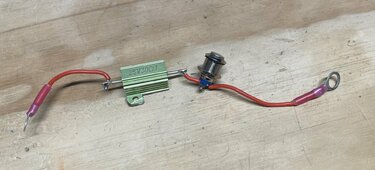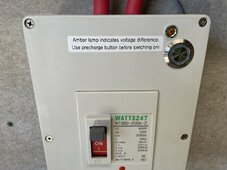In my current RV solar power wall, I use a 600amp blue sea rotary switch as a quick connect between the Lifepo4 battery and the rest of the 24vdc system (inverter charger, solar charge controller and secondary 24vdc charger). I turn the blue sea switch "ON" before I switch the Aims inverter "ON" and switch the PV breakers on that feed solar to the solar charge controller. When I upgraded from 24vdc/200ah to 24vdc/600ah, my 300amp blue sea switch would overheat and fail. The 600amp switch appears to handle the 'rush'. It still makes a hot sound when the amps rush through it initially. I then turn on the Aims inverter.
Q: Before I switch to my Victron Multiplus II 24v 2x120 inverter/charger, do I need to add a resistor to bypass the power switch and pre-charge my Victron inverter capacitors? Does my blue sea switch act as a sufficient resistor between the battery and inverter, rest of the 24vdc systems?
NOTE: I 'assumed' the switch provides the resistance/protection given it has 'ignition protection' built in. My Aims inverter/charger has lived happily in this configuration since 2021.
From the AI on Google search: "The Blue Sea Systems E-Series Master Battery Switch Single Circuit is typically used between a battery bank and an inverter. It is slightly larger and has a higher current rating than the High Current On/Off Mini Switch (6006). It is recommended to use this switch with 3000VA inverters."
Q: Before I switch to my Victron Multiplus II 24v 2x120 inverter/charger, do I need to add a resistor to bypass the power switch and pre-charge my Victron inverter capacitors? Does my blue sea switch act as a sufficient resistor between the battery and inverter, rest of the 24vdc systems?
NOTE: I 'assumed' the switch provides the resistance/protection given it has 'ignition protection' built in. My Aims inverter/charger has lived happily in this configuration since 2021.
From the AI on Google search: "The Blue Sea Systems E-Series Master Battery Switch Single Circuit is typically used between a battery bank and an inverter. It is slightly larger and has a higher current rating than the High Current On/Off Mini Switch (6006). It is recommended to use this switch with 3000VA inverters."






